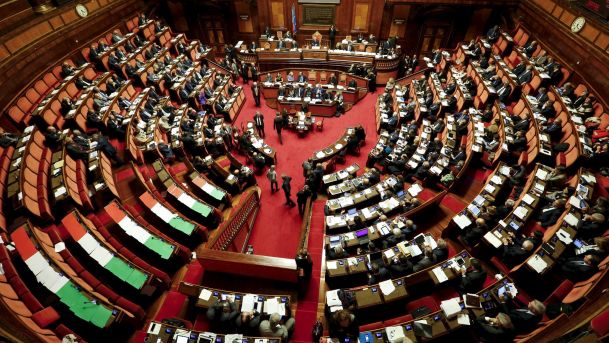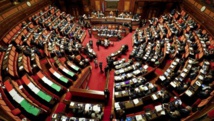Voting began at 7 am (0500 GMT) and runs until 11 pm local time on Sunday. Voting continues on Monday from 7 am to 3 pm. Results are expected later on Monday.
Some 51.6 million people are eligible to vote in the referendum on reducing the number of lawmakers in Italy's two chambers by roughly one third.
The Chamber of Deputies would go from 630 lawmakers to 400, and the Senate from 315 to 200. No minimum turnout is needed for the vote to be valid, amid expectations that the reform will be approved.
Elections are also taking place in seven regions and just under 1,000 cities, including Venice in the north and Reggio Calabria in the south.
The main national government parties - the anti-establishment Five Star Movement (M5S) and the centre-left Democratic Party (PD) - are bracing for a poor showing.
The national opposition, led by Matteo Salvini of the far-right League, is expecting to win in at least three regions, including Veneto and Liguria in the north.
The PD is confident of victory only in Campania, the region around Naples, and is desperate to avoid defeat in Tuscany, a former leftist stronghold where a League candidate could achieve a historic win.
The M5S has no strong candidates, but is likely to console itself with a referendum win. It considers reducing the size of parliament part of its quest to end perks and privileges for politicians.
Critics of the constitutional reform say it produces minimal cost savings and risks undermining the democratic system by weakening the authority of parliament.
In any case, a defeat for government parties is unlikely to topple Prime Minister Giuseppe Conte, as the PD and M5S have strong incentives to try to hold on to national power together.
One is the prospect of managing more than 200 billion euros (238 billion dollars) in loans and grants from the European Union due to come from 2021 as part of the bloc's post-coronavirus recovery fund.
Another is the opportunity to influence the parliamentary election of the next Italian president, due in January 2022, and avoid snap national polls which the PD and M5S would likely lose.
Some 51.6 million people are eligible to vote in the referendum on reducing the number of lawmakers in Italy's two chambers by roughly one third.
The Chamber of Deputies would go from 630 lawmakers to 400, and the Senate from 315 to 200. No minimum turnout is needed for the vote to be valid, amid expectations that the reform will be approved.
Elections are also taking place in seven regions and just under 1,000 cities, including Venice in the north and Reggio Calabria in the south.
The main national government parties - the anti-establishment Five Star Movement (M5S) and the centre-left Democratic Party (PD) - are bracing for a poor showing.
The national opposition, led by Matteo Salvini of the far-right League, is expecting to win in at least three regions, including Veneto and Liguria in the north.
The PD is confident of victory only in Campania, the region around Naples, and is desperate to avoid defeat in Tuscany, a former leftist stronghold where a League candidate could achieve a historic win.
The M5S has no strong candidates, but is likely to console itself with a referendum win. It considers reducing the size of parliament part of its quest to end perks and privileges for politicians.
Critics of the constitutional reform say it produces minimal cost savings and risks undermining the democratic system by weakening the authority of parliament.
In any case, a defeat for government parties is unlikely to topple Prime Minister Giuseppe Conte, as the PD and M5S have strong incentives to try to hold on to national power together.
One is the prospect of managing more than 200 billion euros (238 billion dollars) in loans and grants from the European Union due to come from 2021 as part of the bloc's post-coronavirus recovery fund.
Another is the opportunity to influence the parliamentary election of the next Italian president, due in January 2022, and avoid snap national polls which the PD and M5S would likely lose.









 Home
Home Politics
Politics











